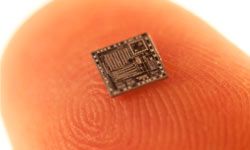
Futurists can dish out some exciting and downright scary visions for the future of machines and science that either enhance or replace activities and products near and dear to us.
Being beamed from one location to another by teleportation was supposed to be right around the corner/in our lifetime/just decades away, but it hasn't become possible yet. Inventions like the VCR that were once high tech -- and now aren't -- proved challenging for some: The VCR became obsolete before many of us learned how to program one. And who knew that working with atoms and molecules would become the future of technology? The futurists, of course.
Advertisem*nt
Forecasting the future of technology is for dreamers who hope to innovate better tools -- and for the mainstream people who hope to benefit from the new and improved. Many inventions are born in the lab and never make it into the consumer market, while others evolve beyond the pace of putting good regulations on their use.
Next, we'll take a look at some sound-loving atoms, tiny tools for molecules, huge bunches of data and some disgruntled bands of people who may want to set all of this innovation back with the stroke of a keyboard.
Contents
- Zero-size Intelligence
- Moon, Mars, More?
- Neurohacking
- Mass Data
- Quantum Control
- Youth Tech Movements
- Nanotechology, Nanomed
- Dark Networks
- Universal Translators
- Avatars, Surrogates, Robotics
10: Zero-size Intelligence

No one wants to be called a zero in terms of intelligence, but having zero-sized intelligence in computing means packing a whole lot of brains in a tiny, tiny package. Computer companies encourage forward-thinking creativity, and some, such as Intel, even have futurists on board to predict where technology is headed. Futurist Brian David Johnson sees the future advance of computing to so small a size that the housing for the computer itself is almost zero. We have the technology to put computers almost anywhere and in almost anything. Computers used to take up entire rooms, then whole desktops, laps and palms, to micro-chip-sized casings and atom-powered transistors invisible to the naked eye [source: Seligson]
Many have predicted that the shrinking of computing size would also lead to the end of something called Moore's Law. Gordon E. Moore, a co-founder of Intel, famously predicted that the number of transistors on a chip will roughly double every 24 months. As computer brains have diminished in size -- with some models powered by just five atoms and one-atom developments about 10 to 20 years down the road -- getting smaller may reach an end point as atomic transistors replace chips. Whether the low cost will trickle down despite the high cost of innovating such small transistors remains to be seen [source: Menegaz].
Advertisem*nt
9: Moon, Mars, More?
Space exploration has taken some hits in the 21st century, with cuts to the U.S. and other international space program budgets. But with the Curiosity Rover on Mars as of August 2012 and plans to launch the "most powerful rocket in history," the Space Launch System (SLS) by 2017, NASA is still very much in the business of the future. After the planned, unmanned sendoff of the SLS in 2017, NASA intends to send a crew of up to four astronauts into space by 2021. This could be a return to the moon, with capabilities for missions on other planets [sources: Landau; NASA].
Even with the world economic downturns of this century, individuals and corporations in the private sector also plan to keep aiming for the stars and enabling people to buy space exploration tickets of their own. Some futurists of decades past would be surprised to see that space travel for every man isn't commonplace, but for a few wealthy adventurers, it's no longer the stuff of science fiction. Maybe their trips will help drive down costs for the rest of us.
Advertisem*nt
Going up?
Instead of choosing a floor when getting on an elevator, imagine choosing a planet. Many futurists support the development of a Space Elevator for transporting people from the Earth to the Moon and to Mars. Such a planetary lift is probably at least four or five decades away, but the vision is very much alive now as innovators talk of a 62,137-mile (100,000-kilometer) ribbon that can be firmly attached to our home planet and extended to an anchor station in outer space. We will simply ascend on a high-tech thread into the deep beyond and hope not to get stuck between floors [source: Space Elevator].
8: Neurohacking
Will there be a day when you say "I can't read your mind, you know!" and the reply will be "Oh, stop it -- of course you can!"? It could happen. Neuroscientists are finding ways to read people's minds with machines, and although this has been in the works for decades, real progress is being made by researchers at the University of California, Berkeley, and elsewhere. Translating electrical activity from the brain by means of decoding brainwaves is one way to help sufferers of dementia, for example, who have complications with neurotransmitters relaying thoughts into comprehensible speech or holding thoughts long enough to get them out verbally before they're forgotten.
On the other hand, it is more than a little frightening to know that science and machines could soon have access to our innermost thoughts. Implications for neurohacking into people's thoughts have also been studied in relation to neuromarketing, which targets people's brains by manipulating their wants and desires through marketing and advertising. Our thoughts and actions could actually be hijacked by a form of media that makes us think we're getting what we want, when really, we're going for something our brains may only think is supposed to be good [sources: IGF; Carmichael].
Advertisem*nt
7: Mass Data
Even if scientists and marketers can't get access to our brains for neurohacking or neuromarketing, can they get access to our data? With unprecedented amounts of images and data available online, filling clouds and other Web-based storage, media, government regulatory bodies and marketers work around the clock to mine user preferences, habits and even relationships.
What to do with all of this data, and more specifically and maybe more urgently, how can we keep all of our activities in the virtual space from shaping the real space of our world? As search preferences narrow results when using the Internet, and our reading and research have become "optimized" based on what key words people search for, our choices in buying products and accessing news and information narrows as the enormous stores of data accumulate.
Advertisem*nt
Data and the machines and algorithms used to manage and make sense of it could largely replace independent decision-making -- either large or small -- and it is happening at such a speed that it's sometimes hard to remember the data isn't in control. People still control the data, but just who has this control and what they do with it will become an ongoing challenge [source: Seligson; IGF].
6: Quantum Control
Picture a tiny bit of a thing on an already miniscule computer chip. Something microscopic with the power to think like a computer without the need of complex circuitry and capable of being moved by light or sound: That is quantum technology simplified.
Put less simply, quantum control uses a technology derived from physics for computer applications. Quantum electrodynamics, or QED, describes the interaction of matter and light, and QED-circuits take this interaction to the computer chip by trying to harness the interaction for circuitry in machines. Phonons are sound-activated quantum vibrations that move circuitry and motor machines at the chip level.
Advertisem*nt
All of these breakthroughs in quantum technology are advancing the zero-sized intelligence we touched on earlier, and they're very exciting to techies and scientists alike. They merge science and technology into something that isn't mere experimentation, but has enormous implications because they work and may someday power the computer and communication devices we use every day. Their enormity comes in their tiny, atomic-sized power [source: MIT].
5: Youth Tech Movements

Young people have never before been so technologically savvy and interconnected, with so much time on their hands and so little money in their pockets, as they are now. There have always been disgruntled youth who fight the establishment and their parents for change and strike out against the old regimes in favor of new freedoms. But in the 21st century, a global recession, lack of opportunity and lack of hope for the youth are practically boiling over -- or, at least, are simmering and ready to explode.
People between the ages of 16 and 24, and ranging from the unschooled to those with doctorate-level educations, are coming up in a world where they may be stuck at home and without job prospects for years. All of this discontent may breed organized anarchy or rebellion in the form of technological or infrastructure sabotage, either physically or in cyberspace.
Advertisem*nt
4: Nanotechology, Nanomed
Technology at the nano level, or nanotechnology, allows for unbelievable precision and a way to copy the work of nature at its most basic functioning, but just how small is a nano? According to the National Nanotechnology Initiative, a sheet of paper is 100,000 nanometers thick and there are 25.4 million nanos in 1 inch. A nanometer is one-billionth of a meter [sources: NNI; Sarchet]!
How is this impacting technology and the future? In just about every field, nanotechnology is being used for innovations in engineering, medical devices, imaging, computing and many more. Nanomedicine is one area experiencing rapid and dramatic growth. Because many illnesses and disorders in the body take place at the cellular level and grow as ruled by the formation of genetic makeup, nanotechnology has the capability to treat at the very root of the condition, rather than after it's fully spread throughout the body. It can be both preventative and curative because treatment reaches the narrowest and most minuscule centers of control. Neurosurgery and gene therapy are just two areas within nanomed that are particularly well-suited for nanotools and technology.
Advertisem*nt
Nanofactories
Taking nanotechology from an idea to reality means being able to make some very, very fine and small-scaled tools. Nanotools have to be assembled at the molecular level in order to be tiny enough to perform work at the nano level, and often, the work of nanotechology is so specialized that the tools need to be modeled and made specifically for each job. Handling the tools involves careful and minute planning, as well, because of their delicate balance and scale. In generations to come, those skilled in molecular nanotechology will be in high demand in the workforce [source: Sarchet].
3: Dark Networks

As the world gets smaller by sharing more and more of the same cyberspace and social tools, we are, like it or not, becoming a bigger collective target for the bad guys. While our data puts us all "out there" in many ways, that same data enables those involved in dark networks and activities to get lost and take on false, covert identities in order to plan bigger and bigger attacks.
Anonymous is one such dark group involved in "hactivism," having found its way into sensitive stores of information from the likes of the FBI, Visa and Mastercard, and government Web sites from the U.K. to China, causing large-scale, disabling computer terror. It functions as a collective of many individuals and spreads its login and computer activities thin enough to lead authorities in too many directions to track, and its acts target everything from politics to commerce.
Advertisem*nt
As incidents of cyber-attacks -- and even infrastructure attacks to water systems and electrical grids -- grow, billions of dollars are stolen and billions of people are at risk each year. This may lead to increased cyber-insecurity, or widespread fear of the very technology people need to go about everyday commerce and communication [sources: Fantz; IGF].
2: Universal Translators
As the Old Testament Bible story goes, the people once spoke the same language and were proud of the accomplishments they made in society, so they decided to build a tall monument to their accomplishments to spread their name to the heavens. God decided to humble their pride by confusing their language so they no longer spoke the same tongue. He created a babble and they abandoned their tower of Babel and scattered out to other nations, no longer proud and no longer one.
Maybe the creators of universal translators aren't out to reunite the nations and put an end to global language confusion, but amazingly enough, the day is near when two people speaking different languages can communicate with one another in their own voices but in languages they don't know or understand. An Arabic speaker can push a button and have his words translated into English as spoken, and vice-versa [source: Dillow].
Advertisem*nt
Anyone who uses Internet-based translators knows the difficulty of getting an accurate translation through a computer, but some of the biggest names in computer technology and military intelligence are hard at work in enabling easier communication across the nations.
1: Avatars, Surrogates, Robotics

Maybe you aren't comfortable with all of the futurist predictions and even the current rate of technological advance, and that's OK. You can be yourself and interact in the world in a fairly low-tech way while allowing a surrogate, avatar or robot to live your online and tech life for you. Even the U.S. Defense Advanced Research Projects Agency (DARPA) has budgeted millions of dollars to create avatars that will act as surrogates for real, live soldiers [source: Ackerman].
While avatars and surrogates were once the stuff of games, virtual reality and computer interfacing, they are taking on more and more active roles as replacements for living breathing humans. Or, are they enhancements for humans?
Fully-realized robotic machines have become more and more widespread in medical technology and scientific development, both in the lab and in hospitals, enabling those with paralysis to move limbs, for instance. "Living" life with 'second life' surrogates is likely to become more and more common every day for those of us in less specialized fields, too.
Lots More Information
Author's Note: 10 Futurist Predictions in the World of Technology
I think I'm too 21st century to be any 20th-century good. It's a pleasure to install and write instructions for peripheral devices or software, but I recently lost my cool trying to get a rabbit-ear antenna to work with a TV. Low tech and bad design make me batty, science fiction is not my thing, but the stuff of real science merging with technology! Definitely. Maybe least desired on futurist prediction lists, however, is anything involving dark networks. In that instance I do like the low-tech image of a light bulb going on above someone's head, not a faceless and gloomy underworld of tech-savvy ne'-er-do-wells using their genius for evil.
Related Articles
- 5 Futuristic Trends in Supercomputing
- Futurology: 5 Ways Society Will Be Affected by Cognitive Technology
- 5 Futurist Predictions in the World of Health
More Great Links
Sources
- Ackerman, Evan. "DARPA Wants to Give Soldiers Robot Surrogates, Avatar Style." IEEE.org. Feb. 17, 2012. (Aug. 13, 2012) http://spectrum.ieee.org/automaton/robotics/military-robots/darpa-wants-to-give-soldiers-robot-surrogates-avatar-style
- Bergin, Chris. "NASA Exploration Roadmap: A Return to the Moon's Surface Documented." NASASpaceFlight.com. Mar. 19, 2012. (Aug. 12, 2012) http://www.nasaspaceflight.com/2012/03/nasa-exploration-roadmap-return-moons-surface-documented/
- Carmichael, Mary. "Neuromarketing: Is It Coming to a Lab Near You?" PBS.org. Nov. 9, 2004. (Aug. 11, 2012) http://www.pbs.org/wgbh/pages/frontline/shows/persuaders/etc/neuro.html
- Dillow, Clay. "Microsoft's Universal Translator Lets You Speak Foreign Languages in Your Own Voice." Popsci.com. Mar. 12, 2012. (Aug. 12, 2012) http://www.popsci.com/technology/article/2012-03/microsofts-universal-translator-converts-speech-while-preserving-accent-and-timbre
- Fantz, Ashley. "Who Is Anonymous? Everyone and No One." CNN.com. Feb. 9, 2012. (Aug. 11, 2012) http://articles.cnn.com/2012-02-09/world/world_anonymous-explainer_1_chat-room-internet-caf-anonymous-members?_s=PM:WORLD
- Institute for Global Futures (IGF). "Global Futures Forecast 2012." GlobalFuturist.com. 2012. (Aug. 10, 2012) http://www.globalfuturist.com/images/docs/GFF2012.pdf
- Landau, Elizabeth. "What We've Done on Mars and What's Next." CNN.com. Aug. 12, 2012. (Aug. 13, 2012) http://www.cnn.com/2012/08/11/tech/innovation/mars-exploration-history/index.html
- Massachusetts Institute of Technology (MIT). "How to Build a Phononic Computer." TEchnologyReview.com. Aug. 13, 2012. (Aug. 13, 2012) http://www.technologyreview.com/view/428844/how-to-build-a-phononic-computer/
- Menegaz, Gery. "Moore's Law: The End Is Near-ish!" ZDNet.com. July 16, 2012. (Aug. 10, 2012) http://www.zdnet.com/moores-law-the-end-is-near-ish-7000000972/
- National Aeronautics and Space administration (NASA). "Space Launch System." NASA.gov. 2012. Aug. 13, 2012. http://www.nasa.gov/pdf/664158main_sls_fs_master.pdf
- National Nanotechnology Initiative (NNI). "What Is Nanotech?" Nano.gov. 2012. Aug. 10, 2012. http://www.nano.gov/
- Sarchet, Penny. "Nanofactories: A Future Vision." Guardian.CO.UK. Nov. 25, 2011. (Aug. 11, 2012) http://www.guardian.co.uk/nanotechnology-world/nanofactories-a-future-vision
- Seligson, Joelle. "Q&A with Brian David Johnson." Association of Science-Technology Centers, ASTC.org. 2012. (Aug. 10, 2012) http://www.astc.org/pubs/dimensions/2012/Jul-Aug/Q&A_BrianDavidJohnsonTranscript.pdf
- Space Elevator. "The Space Elevator Reference." SpaceElevator.com. 2012. (Aug. 10, 2012) http://www.spaceelevator.com/
Cite This!
Please copy/paste the following text to properly cite this HowStuffWorks.com article:
Citation
I am an expert enthusiast in the field of technology and futurism with a strong foundation in both theoretical knowledge and practical application. I have a deep understanding of the concepts and trends shaping the future of machines and science, and I have actively contributed to and kept pace with the advancements in this field. My expertise is grounded in a combination of academic study, professional experience, and a passion for staying informed about the latest developments in technology and innovation.
Concepts in the Article:
Let's dive into the concepts and ideas presented in the article "Futurist Predictions in the World of Technology" and explore each one in detail:
Zero-size Intelligence
The concept of zero-size intelligence refers to the trend of packing a significant amount of computing power into a very small package. This is made possible by advancements in technology, such as the development of micro-chip-sized casings and atom-powered transistors.
Moon, Mars, More?
This section discusses the future of space exploration, including NASA's plans for missions to the moon and other planets. It also touches on the potential for private sector involvement in space travel.
Neurohacking
Neurohacking involves the use of technology to read and interpret brain activity, with potential applications in areas such as healthcare and marketing. It raises ethical and privacy concerns related to accessing individuals' thoughts.
Mass Data
The concept of mass data refers to the unprecedented volume of information available online and the implications of data mining for user preferences and decision-making. It also discusses the potential impact of data-driven algorithms on shaping real-world outcomes.
Quantum Control
Quantum control explores the use of quantum technology in computing applications, including the manipulation of quantum vibrations for circuitry at the atomic level. It highlights the potential implications of quantum technology for everyday devices.
Youth Tech Movements
This section focuses on the technological savvy of young people and the potential for discontent to manifest in organized technological or infrastructure-based activities.
Nanotechnology, Nanomed
Nanotechnology involves working at the nanoscale to achieve precision and mimic natural processes. It discusses the applications of nanotechnology in various fields, particularly nanomedicine and its potential for treating illnesses at the cellular level.
Dark Networks
Dark networks refer to covert activities in cyberspace, posing a potential threat to data security and everyday infrastructure. It discusses the challenges posed by anonymous groups involved in cyber-attacks and their impact on global cyber-insecurity.
Universal Translators
Universal translators aim to facilitate communication across different languages, utilizing advanced technology to enable seamless language translation in real time.
Avatars, Surrogates, Robotics
The concept of avatars, surrogates, and robotics explores the role of technology in representing and potentially replacing human interaction and labor, including the use of robotic machines in medical and scientific settings.
Each of these concepts reflects the ongoing intersection of technology and futurism, presenting both opportunities and challenges for the future of machines and science. If you have specific questions about any of these concepts or would like to explore them further, feel free to ask!